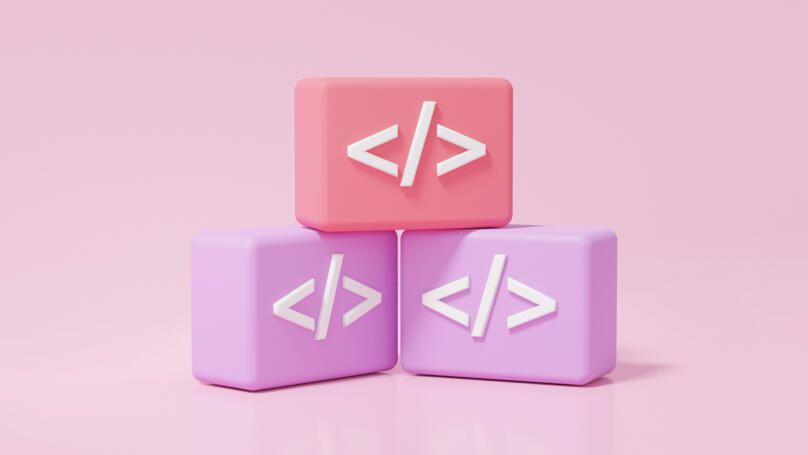Critical Chain Project Management

What is critical chain project management, and how can you apply this method when managing personal matters rather than projects? We will tell you in today's glossary.
What is Critical Chain Project Management?
Critical chain project management (CCPM) is a methodology that prioritises and solves problems using minimal resources. The definition of the term implies that it refers to the method of realising the project and its objectives. The meaning of critical chain project management lies in the theory of constraints. In 1997, Dr. Eliyahu Goldratt, a business management expert, coined this theory and the critical chain project management framework. Eliyahu-M-Goldratt's book, "Critical Chain", focusing on a business methodology, introduced this methodology. The book contrasted the method with other management methods, such as the project management body of knowledge, to which the critical chain methodology is most actively compared.
According to the theory of constraints, the CCPM project management method begins to work after the project schedule, tasks, and their dependence on each other are drawn up. Each task has some associated constraints: deadlines, additional inputs, etc. If the project did not use any additional resources other than those allocated, it performed better than the project where additional resources were required.
The Critical Chain Method
The Critical Chain Method (CCM) prioritises tasks that allow the most critical activities and those requiring high risk to get placed in the project's first stages. In this way, resource buffers are plugged in later and used to deal with unforeseen issues while working on less critical tasks. This method aims to eliminate any delays in the project schedule and get rid of uncertainties, overestimating the importance and complexity of tasks and misuse of resource buffers (e.g., adding additional labour to the staffed project).
What is a Critical Chain?
A critical chain is a prioritised list of tasks. For example, you need to clean your apartment. Its main components are dusting, wet cleaning, cleaning open cupboards, cleaning above cupboards, cleaning on the balcony, in the bathroom and so on. Each type of cleaning requires specific products, sponges, and action sequences. Some types of cleaning are more critical than others - for example, without dusting with a vacuum cleaner and wet mopping with a mop, you will not be able to clean at all. According to the critical chain theory, these two actions will stand at the very beginning because they are the basic, the most important, the imperative in this "project." Cleaning the closet shelves, on the other hand, can wait. It can even connect to the buffer of resources - children who have returned from school or extra time tomorrow after work. As the manager, you are responsible for managing the buffers, not the team. The team is assumed to know how and what to do while working. There is no question of training the team - the method gets used when you must complete a project and do it well and within a specific timeframe.
Critical Chain Components

What are the components of a critical chain?
- The actions themselves. Tasks that need to be divided into clusters and prioritised and a methodology for implementation that must be drawn up. Without them, the critical chain would not exist!
- Considering the time you must allocate to each task is another crucial component when planning a project using the critical chain method.
- Buffers. Buffers are a notional name for resources. For example, a labour buffer is the extra employees you can bring onto the project to complete it, and a cash buffer is the funding you can theoretically get. A time buffer is the extra time you still have before the deadline. To understand what buffers might be present in your project, you need to think about what could go wrong.
Buffer Types in the Critical Chain Method
In general, buffers are resource, supply, and project buffers. Now, let's deal with each type separately.
- The Resource Buffer
The "resource buffer" is the resource itself. In some cases, a "buffer" is a reminder that the project team needs to activate a particular resource, but more often, a buffer is a resource as it is. Employees get offered it when the current resource is either already in short supply or is expected to be in short supply soon.
- The Supply Buffer
It is also a resource, but it is offered for use in a project when needed in a non-critical chain of action - for instance, a resource of time or additional funds that staff can use if something happens.
- The Project Buffer
It is the total sum of all buffers used on a particular project.
How Do You Use the Critical Chain for Personal Use?

Now for the most important part - how do you use the critical chain in your life to address tasks that may not be projects?
- Define action steps. Before testing a new prioritisation method, find the tasks you will include in the list.
- Build a diagram: what depends on what. Which actions will depend on the result of other actions? How many of these actions are there? Examine each task - many of them likely depend on each other.
- Identify constraints. Before working on personal tasks, you must understand what resources you don't and won't have. For example, you need to make a delicious breakfast, but you don't have coffee. You could order it, but you don't have the money to deliver and buy coffee. So, not having coffee is your limitation. You won't put the action "make coffee" on your task list because you don't have that coffee, and you won't do anything chaotic to find coffee and complete the task.
- Identify critical tasks. These are also called the critical path, which is the sequence of actions that are very important in a given case. It doesn't mean that other tasks are unimportant, but the actions that will enter the critical path get done anyway and first.
- Define buffers. For example, you may have a buffer of resources: time, extra force, money, whatever. Write out what buffers you have and how you can use them. "If I don't have time to make coffee, I can order it from a grocery delivery service. It will arrive ready to go - that's my cash buffer."
- Break down resources into tasks. Think about what task you can accomplish with what resource. Write down exactly how you will use the resources. Yes, you will have to write it out for the first time to start thinking about resources rather than other categories like timeframes. Time is also a resource and a very important one in the case of a critical chain project. It is more important to focus not on strict deadlines but on spending as few resources as possible and putting in as little effort as necessary.
Critical Chain versus the Critical Path Method. What's the Difference?

The critical chain method and critical path method are different concepts. The critical path method in project management focuses on a single sequence of significant tasks related to a project. It allows the entire project team to determine the workflow to build into it and ensure the project gets completed within the previously planned timeframe. If a task is extra and not included in the project's critical path, it should be removed from the priority list. It can generally get completed, but not right now.
The critical chain method places the highest priority on those resources that are needed to complete the project within a predetermined timeframe. Surplus (additional) resources are also included in the project, and if the team does not utilise them, according to the critical chain, the project is progressing successfully. Thus, the critical chain method focuses on the resources needed to complete the project, while the critical path method is about planning and completing the project on time. It is the key difference between the critical path and the critical chain.
The Benefits of the Critical Chain Method in Project Management
Why is the critical chain method useful and beneficial?
Firstly, you'll save resources. You see them in the palm of your hand: this resource can be used here and there. Deciding which resource to free up for this or that part of the project becomes straightforward. Critical chain scheduling in project management is about resources, not time slots.
You complete tasks quickly and efficiently. The critical chain method is about utilising the right resources quickly and ensuring those resources are replaced correctly in the next time slot. The critical chain method suits you if you need to finish your work quickly and efficiently or organise teams.
You don't have to think about employee education. You don't teach your employees - it's assumed they can already use software, do analysis, and perform their duties well. You don't control what they do; you tell them the sequence of work and the results you want once, and then you manage the buffers you put around the project and use them at the right time.
The Steps for Using the Critical Chain Method in Project Management

How do you use the critical chain method in project management? Well, it's easier than it may seem at first glance. To successfully implement the critical chain method in your project management, you need to:
- Define the critical chain. Break down the project work into small tasks and divide them into detailed subtasks.
- Identify two types of tasks. The first type is those that you need to complete the project. For example, suppose you are applying to a university abroad. In that case, you must collect documents, apostille them, ensure they are suitable, write motivation letters, send them to universities, and pay application fees. The second type is tasks that will require the most of your time. You can merge second-stage tasks into first-stage tasks; when applying to a university abroad, the second type of tasks would be considered the most resource- and time-intensive. These may include writing a covering letter, CV (resume), and motivational documents, as well as the move and the first weeks in your new city.
- Identify resource constraints. To minimise interruptions and project delays, you need to understand what limitations you will have. In a study abroad situation, this could be insufficient funds to study at a top university, lack of knowledge of a foreign language, a short time frame before your desired start date, lack of documents to prove your eligibility for a scholarship, and so on.
- Distribute tasks among team members. Make sure that each person does what they are good at; this is especially true if this is the first time you are assembling the team you plan to work with on a project. Allow the team to work on different tasks; don't micromanage, that is, constantly supervising and clarifying project statuses several times a day.
- Refuse multitasking. Within the framework of this methodology, it will not play in your favour. Forbid switching tasks as it will not positively affect productivity. Focus on your tasks and ask your employees to do the same.
- Create different resource buffers - for example, a time buffer or a buffer of extra manpower. Studies show that this approach completes projects 25% faster than those leading without this methodology at the core.
- Avoid wasting time. Allocate 50% of the usual time to complete a typical task of a particular plan to tackle a current assignment with the same characteristics. If it usually takes a year to enrol abroad, you must tackle the task in six months. If more time is needed, you can use buffers - adding resources, including time and money, to those already committed to the issue. With a compressed timeframe, you will accomplish the task most efficiently, and the team will reach optimum productivity.
The Conclusion
Critical chain project management is a convenient way of solving problems the project manager faces and distributing responsibilities within the team. The main principles of the critical chain method are managing resource buffers rather than micromanaging employees, offering employees areas of responsibility that are familiar to them, allocating resources to tasks, highlighting essential tasks that you need to do first, and reducing the time to complete actions. This method makes it possible to complete projects quickly, efficiently and with the best results. A manager who uses this method can also count on the high motivation of employees and time for experimentation autonomously, and you don't have to spend a lot of effort to train your staff and explain to them how exactly you want to complete the project.























